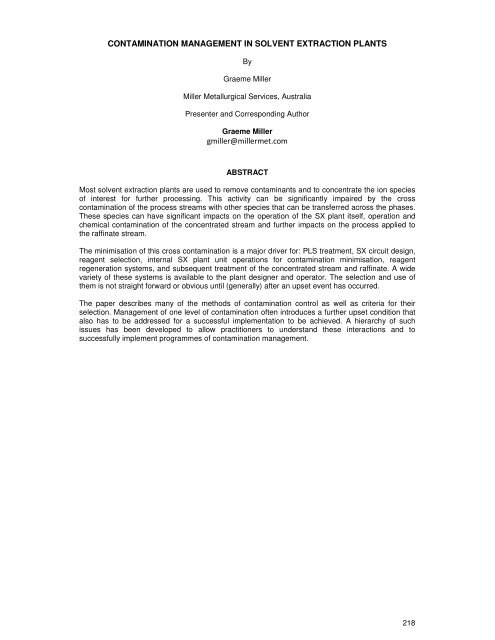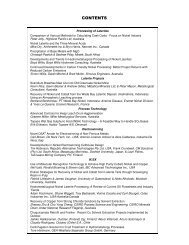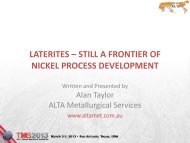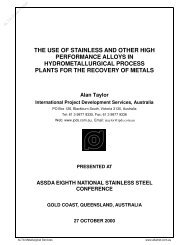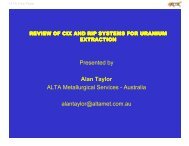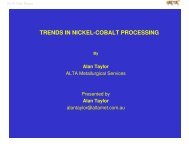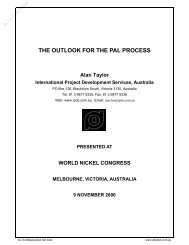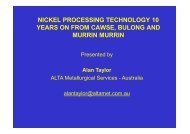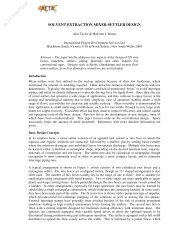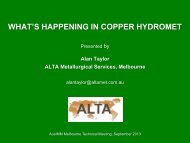Contents & Abstracts - ALTA Metallurgical Services
Contents & Abstracts - ALTA Metallurgical Services
Contents & Abstracts - ALTA Metallurgical Services
Create successful ePaper yourself
Turn your PDF publications into a flip-book with our unique Google optimized e-Paper software.
CONTAMINATION MANAGEMENT IN SOLVENT EXTRACTION PLANTS<br />
By<br />
Graeme Miller<br />
Miller <strong>Metallurgical</strong> <strong>Services</strong>, Australia<br />
Presenter and Corresponding Author<br />
Graeme Miller<br />
gmiller@millermet.com<br />
ABSTRACT<br />
Most solvent extraction plants are used to remove contaminants and to concentrate the ion species<br />
of interest for further processing. This activity can be significantly impaired by the cross<br />
contamination of the process streams with other species that can be transferred across the phases.<br />
These species can have significant impacts on the operation of the SX plant itself, operation and<br />
chemical contamination of the concentrated stream and further impacts on the process applied to<br />
the raffinate stream.<br />
The minimisation of this cross contamination is a major driver for: PLS treatment, SX circuit design,<br />
reagent selection, internal SX plant unit operations for contamination minimisation, reagent<br />
regeneration systems, and subsequent treatment of the concentrated stream and raffinate. A wide<br />
variety of these systems is available to the plant designer and operator. The selection and use of<br />
them is not straight forward or obvious until (generally) after an upset event has occurred.<br />
The paper describes many of the methods of contamination control as well as criteria for their<br />
selection. Management of one level of contamination often introduces a further upset condition that<br />
also has to be addressed for a successful implementation to be achieved. A hierarchy of such<br />
issues has been developed to allow practitioners to understand these interactions and to<br />
successfully implement programmes of contamination management.<br />
218


